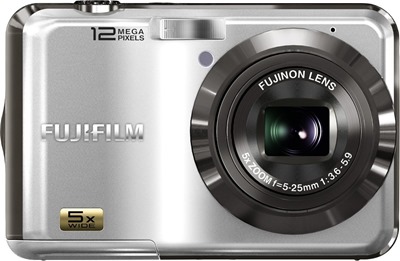Are You Better Off Buying An Older Digital Camera?

There are a few things that those who have been using digital cameras a while are very aware of.
1. It’s all about the lens
No matter what new whiz-bang feature is in any modern digital camera, if the lens isn’t good, the camera isn’t good, period…
…and that’s why cell phones take such crappy pictures. Tiny lens. Cell phones are convenient, no doubt, but you’re always fighting against that lens when it comes to their photo-taking abilities.
2. For the most part, anything over 6 megapixels is a waste
The technical spec of 6MP is (or is supposed to be) a 3008×2000 image resolution, and when printing at 300ppi, you can print at a maximum size of 10.08×6.67 inch, or at 200ppi print at 15.04×10 inch. Go anywhere below 200ppi and you start seeing physical pixels on a print.
I mention the pixel resolution because even the biggest consumer-grade monitor at 2560×1600 has less native resolution than a 6MP image. In other words, the vast majority of computer users don’t have monitors that are anywhere near 2560×1600. Maybe when you combine monitors for dual/triple/quad display they do, but as for a single monitor of that size? Most people don’t have that and stick to 1920×1080-and-under range.
I mention physical print size because for wallet photos and 6×9 printed photos, 6 megapixels easily gets the job done. Or to say it another way, anything over 6MP by current standards means you’re in pretty good shape and will be for a good long while.
3. Photos shared through email and social networks are well under 6MP
Currently, the standard (said loosely as this isn’t exact) for shared photos across email and social networks is 4MP, as in images that are a pixel resolution of 2464×1632 or less.
Yes, you will see some 6MP images shared from time to time, but generally speaking, the fastest and most effective way to share “quality” photos whether in email or social media is to stick to 4MP or less.
Will photo sharing eventually go above 6MP?
Yes, but it’s slow going.
I’ll put it to you this way:
A “true” 35mm scanned image is a pixel resolution of 5380×3620, which has a maximum print size of 17.93×12.06 inch at 300ppi, and 26.90×18.10 inch at 200ppi.
Yes, that is above 16MP (4920×3264), and yes there are digital cameras you can buy right now that can output the scanned-35mm spec…
…but unless you’re doing pro photography, those photos a pain at best to share out online. Big files, meaning big uploads, meaning too big for email and too big to share out on social media.
And even if you post photos that huge to photo-specific sites like Flickr, the image is always sized down when viewed by the public.
Older cameras that output 6MP to 12MP are still very usable today
From roughly 2006 to 2010 there were a whole swath of digital camera choices out there fighting for your business. And we’re talking everything from the most basic point-and-shoot all the way up to full-bodied pro-level rigs. And pretty much all those cameras had an MP output of 6MP to 12MP.
Many of these cameras made during that time were and still are really, really good that were packed with features.
A few interesting facts about those older cameras:
Many are still available for purchase as NIB (New In Box)
Thousands of those older cameras are still out there in never-opened condition and are actually quite easy to locate, be it on Amazon or eBay.
Some high-end models are available at fire sale prices
Many cameras that sold for $500 or more back in the 2006-2010 era can be had for well under $200 now. Some are even knocked down to under $100, depending on what you get.
Older cameras don’t “feel old”
With some technologies, you know when you’re using something old and it feels old when using it. That’s not the case with digital cameras of the 2006-2010 era.
Many cameras today still use the same tactile buttons the older ones did, and also still use the same on-screen interfaces. In fact, there are quite a few new cameras that if you placed them side-by-side next to an older one, you couldn’t tell the difference other than one is 16MP and the older one is 10MP. The advances in many instances are all software-based.
Is there anything to look out for?
Two things: Software support and media storage format.
Chances are a camera’s control software made in 2007 would not work in Windows 8. In Windows 7, yeah it would work. But probably not Win8. However, if you don’t use camera control software and just copy images off the card directly to your computer (or transfer via USB cable), then the control software is something you don’t need to worry about.
The biggie here is the media storage format.
General rule of thumb: If the older camera doesn’t use SD or MicroSD, don’t buy it.
An example of something which would be a waste of money to buy older-NIB is any camera that only uses the xD card as that is a dead format. Yes, you can buy replacement cards, but only up to a maximum size of 2GB. And it’s pretty much guaranteed the card reader in your PC or laptop won’t fit them, forcing you to transfer images via USB cable only.
Some older cameras are multi-format capable. Many FujiFilm cameras for example did support both xD and SD and can use either. But for any camera that is proprietary to one format that is not SD, you can pass on that one.
In the end, many cameras made from 2006 to 2010 are still very usable as said above. So if you’ve got an eye on an older NIB digital camera that has all the features you want, it supports SD and the price is right (which it probably is), go ahead and get it.
What older camera from 2006 to 2010 would you recommend?
Do you have an “old faithful” camera from that era? Post a comment mentioning its brand and model name and tell everyone why you like it and still use it.
(Note on image at top: That’s a FujiFilm AX200 from 2010. Would you have guessed that’s a 3-year-old model?)

















4 thoughts on “Are You Better Off Buying An Older Digital Camera?”